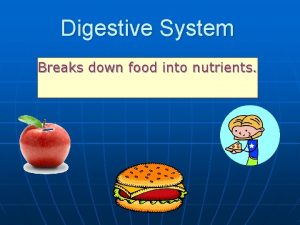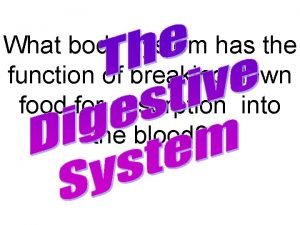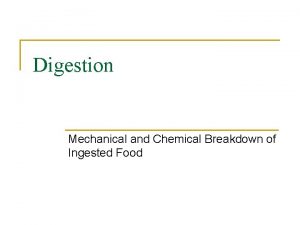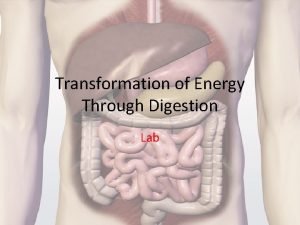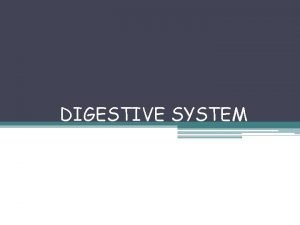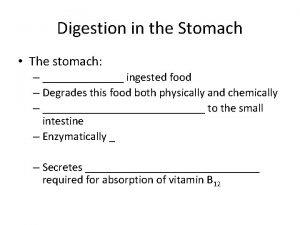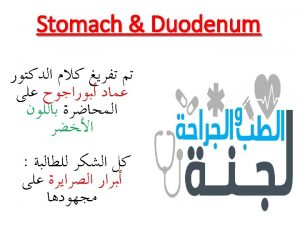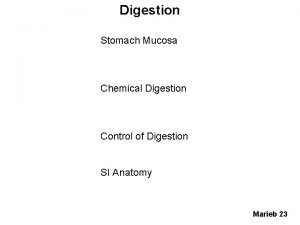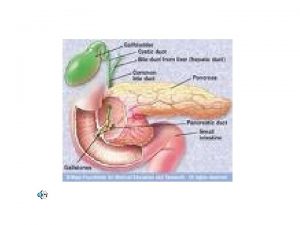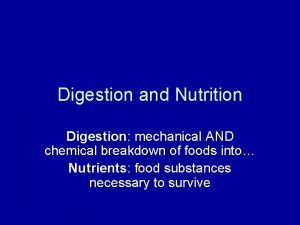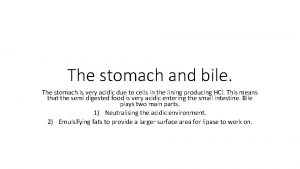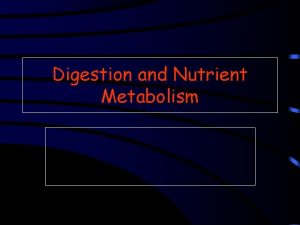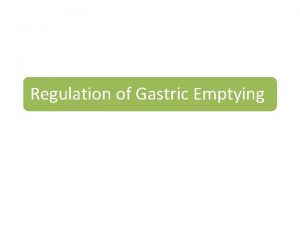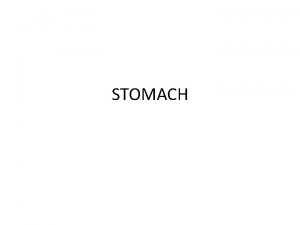Digestion The Stomach and Digestion Site of food













- Slides: 13

Digestion

The Stomach and Digestion - Site of food storage and protein digestion - J-Shape organ that can store up to 1. 5 L of food - Movement of food in and out of stomach is regulated by sphincters - Cardiac sphincter: regulates food from esophagus - Pyloric sphincter: regulates food from stomach to small intestine

The Stomach and Digestion cont. • There are millions of cells that line the wall of the stomach that secrete many fluids which called collectively called gastric juice • Gastric juice : Hydrochloric acid (HCl) mucus, pepsinogens and other materials • Pepsinogens: enzymes that when exposed to a low p. H such as conditions in the stomach, turns into its active form pepsin which is a enzyme the digests proteins • What do we know about HCl?

Mucus • A protein produced by a layer of epithelial cells that provide a protective coating • It is alkaline in nature which is basic and protects lining of the stomach from both acid from HCl and pepsin from breaking down proteins of stomach lining • However when mucus is destroyed or not being produced…

Disorder: Stomach Ulcer • Ulcer: a lesion along the surface of an organ -when the mucus membrane is destroyed a peptic ulcer can be formed resulting in tissue being burned an allergic reaction can become stronger resulting in blood vessels breaking down

Heliobacter pylori

Stomach Disorders: Ulcers cont. • Case Study • Have students in pairs or small groups uncover this bacteria Heliobacter pylori and other information about ulcers • Prevalence, demographics, how to detect this bacteria, bacterial weight/amount, effects on every day living/side effects, treatment etc. are all topics the students could discover • Could be in the form of a report, or a presentation, or even a jigsaw activity

Small Intestine Introduction Activities • http: //www. youtube. com/watch? v=4 wa. SJ q. OEJts • Easy way to get the students thinking about the small intestine is having 7 m of yard, tubing etc. and having it passed around the classroom • After this have them put it in a small box • Small intestine is not named small because of its length rather its diameter!

Small Intestine Cont. • 3 parts of the small intestine are the: • Duodenum: - most digestion occurs here • Jejnum: has many folds that continue breakdown and absorption of remaining proteins and carbohydrates • Ileum: less absorption occurs here, unabsorbed particles are pushed through and continued

Digestion in the Small Intestine • How is the small intestine protected if HCl and pepsin- soaked food is sent to it from the stomach?

Small Intestine and Pancreas Interaction

Small Intestine and Pancreas Interaction

Liver and Gall Bladder: Role in Digestion
 Digestion of food in stomach
Digestion of food in stomach Carbohydrate digestion begins in the
Carbohydrate digestion begins in the Venn diagram mechanical and chemical digestion
Venn diagram mechanical and chemical digestion Chemical breakdown of food
Chemical breakdown of food Hot site cold site warm site disaster recovery
Hot site cold site warm site disaster recovery Unit 2 food food food
Unit 2 food food food Eltonian pyramid
Eltonian pyramid Digestion energy transformation
Digestion energy transformation Digestion of carbohydrates ppt
Digestion of carbohydrates ppt Hình ảnh bộ gõ cơ thể búng tay
Hình ảnh bộ gõ cơ thể búng tay Bổ thể
Bổ thể Tỉ lệ cơ thể trẻ em
Tỉ lệ cơ thể trẻ em Voi kéo gỗ như thế nào
Voi kéo gỗ như thế nào
